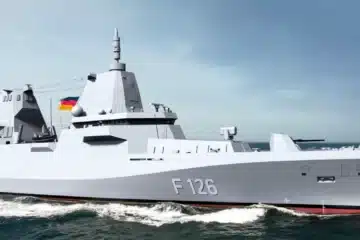IAI press release
The SEA SERPENT delivers an agile, highly penetrative, combined anti-ship and land attack capability at ranges significantly in excess of 200 km. It deploys an innovative RF seeker head and a sophisticated data analysis and weapon control system to provide precise target detection, discrimination and classification. It overcomes both kinetic counter-fire and electronic countermeasures of increasing sophistication, so that the missile can locate and attack its target in littoral, open-ocean and overland environments. It is especially designed to prevail in contested, congested and confusing situations characterised by large numbers of decoys, disrupted reality and heavy electronic interference, as well as clutter from land and false returns. In fast-moving situations, SEA SERPENT incorporates mid-course updates from real-time ISTAR feeds and the ability to re-task in flight, especially in cooperative engagements and distributed sensor-and-shooter networks.

As the most advanced ship-launched anti-surface missile in the free world, SEA SERPENT also offers significant Military Off-the-Shelf Solution (MOTS) advantages in terms of cost, time-to-procurement, entry into operational service and risk reduction. Benchmarked against the need to defeat the most sophisticated platforms and technologies, SEA SERPENT has been developed in parallel with similar missile systems in service with the Israeli Navy and was selected to provide powerful strike capabilities for Finland’s SSM2020 programme. These systems are based on the heritage of the GABRIEL family of surface-to-surface missiles. SEA SERPENT has already demonstrated an impressive Next Day capacity to deal with emerging threats, as well as the technological flexibility for further growth and development.

IAI looks forward to partnering with THALES in the UK’s proven track record of delivering complex sensor and weapon solutions for the Royal Navy and other navies.
Both companies are fully committed to maximising UK prosperity and creating employment and investment opportunities. The IAI/THALES in the UK solution for SEA SERPENT will concentrate on utilising UK industry content and expertise for initial delivery, through-life maintenance and support, as well as future development and upgrade options.
-End-
Naval News comments:
The SEA SERPENT anti-ship missile is being offered for the Royal Navy’s I-SSGW requirements. The Royal Navy’s surface fleet (Type 23 frigates and some of the Type 45 destroyers) currently deploys with Harpoon Block 1C procured back in the 1980s. The ageing system was set to reach its end of shelf life in 2018, but this has been pushed back to 2023. The Future Cruise/Anti-Ship Weapon (FC/ASW), an ongoing joint UK / France program, won’t be ready until 2030ies at best and the Royal Navy needs an interim, off the shelf anti-ship missile solution for its current and future surface fleet (with the first Type 26 frigate set to be delivered around 2025).
Back in 2019, the UK Ministry of Defence Torpedoes, Tomahawk and Harpoon (TTH) Project Team detailed its requirement to implement an interim surface to surface guided weapon to replace the existing Harpoon missile:
The TTH project team, part of the UK Ministry of Defence, hereafter referred to as the authority, has a requirement for the provision and introduction into service of the I-SSGW system as an interim replacement for the existing system that is going out of service. The I-SSGW is to provide a ship launched over the horizon precision anti-ship capability and a terrain following precision maritime land attack capability.
It is anticipated that the I-SSGW capability will operate on X 5 Type 23 (Towed Array) frigates capable of concurrent Anti-submarine warfare (ASW) and Anti Surface Warfare (ASuW) operations in protection of a formed Maritime Tasking Group, for a 10-year period.
UK Ministry of Defence, Weapons, Torpedoes, Tomahawk and Harpoon (TTH) Project Team’s contract notice issued August 19, 2019.
The I-SSGW contract is set to be awarded sometime by this summer, following a statement by Jeremy Quin, Minister of State for the Ministry of Defence made in December 2020:
“The Royal Navy has set the requirements for a Surface-to-Surface Guided Weapon (SSGW) to ensure they maintain the ability to deter and defeat enemy warships. A competition is now taking place and on current plans, subject to funding, we expect bids to provide a solution to SSGW, by mid-2021.”
According to our information, the likely bidders are:
- Lockheed Martin (LRASM)
- MBDA (Exocet MM40 Block IIIc)
- Raytheon/Kongsberg (NSM)
- Saab (RBS-15 Mk3)
- IAI (SEA SERPENT)
Initial deliveries of the interim anti-ship missile is set to start in 2023/2024 time frame.
According to official sources, the Harpoon system is due to go out of service (OSD) in December 2023. It is installed on 13 (thirteen) Type 23 frigates, 3 (three) Type 45 destroyers and 3 (three) land-based reference systems. Babcock recently won a new support contract for the Harpoon missiles for 2 years from 1 January 22 until 31 March 24 with an option to extend in 1-year increments (to a maximum of three) at the authority’s discretion.






